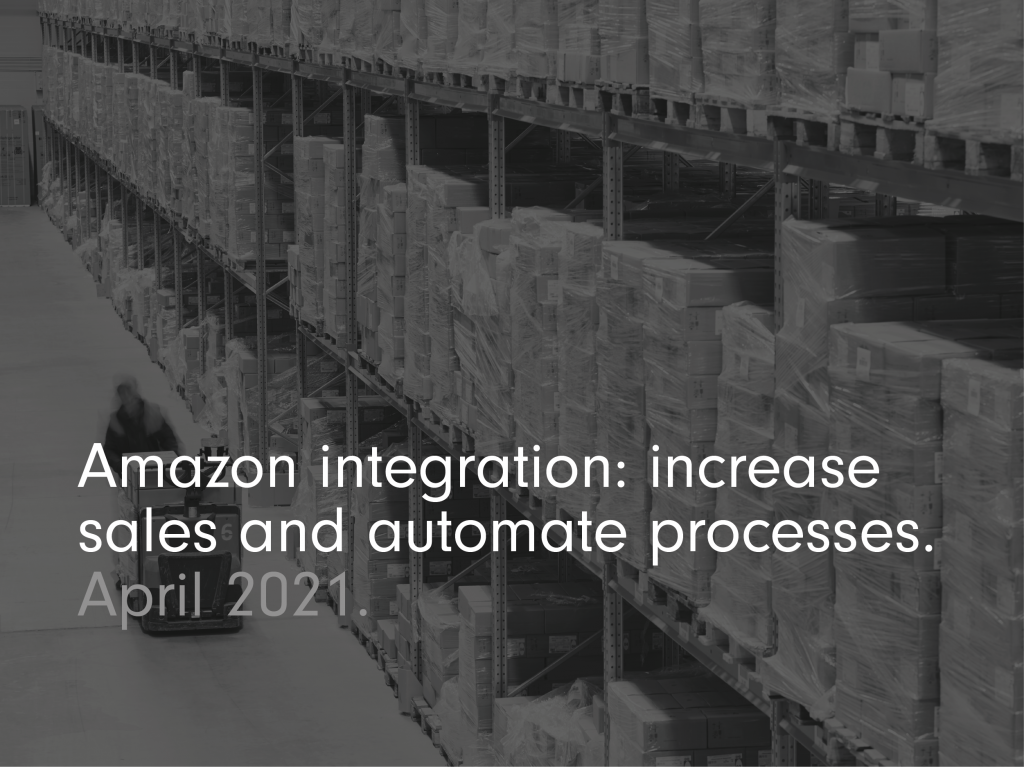Amazon integration: increase sales and automate processes.
Selling via Amazon’s marketplace offers an additional route to market that can boost your sales. Balloon’s Amazon integration helps automate the sales order process by facilitating the communication between Amazon and your warehouse management system (WMS).
Here’s how having an Amazon integration can help your business to sell more.

Different ways to sell through Amazon.
There are two ways that you can sell through Amazon. The first is as a vendor, whereby you sell your products to Amazon and they sell them on to customers. This first-party method of selling is by invitation only. You cannot apply to be a vendor to Amazon; they approach you. Using Amazon’s Vendor Central programme, vendors have little influence over how their goods are sold, or at what price. It is like a typical wholesaler/retailer arrangement. Amazon buys products from vendors and is responsible for warehousing them, fulfilling them and setting the prices.
If you’re not large enough or well-known enough to be invited into the Vendor Central programme, then the alternative method of selling via Amazon is as a third-party, via the Seller Central marketplace. Using this channel, sellers use the Amazon website as a marketplace to sell their goods. They set their own prices and are responsible for the warehousing and delivery of products. On top of the standard agreement, there are additional options, such as having Amazon warehouse and/or fulfil your goods, or opting to fulfil yourself but meeting Amazon’s “Prime” conditions of one-day delivery at no additional cost. Sellers can also advertise on Amazon, to feature their items, and offer products via the Amazon Business site.
Why sell through Amazon?
Amazon is the world’s largest online marketplace. As an ecommerce heavyweight with global success, there are many advantages to leveraging Amazon in your own supply chain.
- Sales potential – with around 285 million active customers worldwide, and a 2020 revenue of US$ 386.064 billion, Amazon can expose your products to a huge market. And according to Amazon, “more than half of all units purchased in Amazon’s stores come from small and medium businesses”.
- Less marketing effort – you may not always be sure of attracting customers to your own website. But as it ranks fourth in Alexa’s list of UK top websites you can certainly guarantee that your prospects have heard of – and use – Amazon.
- Shipping flexibility – if you want, you can have Amazon deliver your products for you. This streamlines your logistics. You don’t have responsibility for packaging or shipping your goods, and Amazon’s network of delivery drivers can help you quick delivery times.
- Less warehouse space needed – if you choose not to fulfil orders yourself, then you can opt for Amazon to warehouse your goods, reducing your warehousing costs.
- European and global exposure – UK sellers can sell on all 5 of Amazon’s European Marketplaces, managing everything from a single account. There are also options to open your sales up to global Amazon websites – that’s a total of 14 marketplaces covering more than 180 territories. It’s easy to sell into these markets without having to understand the languages, cultures or buyer behaviour of people in other countries.
- No commitment – with Seller Central, you are not tied in to a lengthy contract. Instead, there’s a monthly plan that you can cancel at any time, which limits your risk.
- 24/7 customer service – selling your products through Amazon gives your buyers access to their customer service in case of any issues. This has an additional advantage when it comes to selling in overseas territories, as you don’t need to open local customer service operations or employ staff that speak the local language.
- Training and support – to help you trade as effectively as possible, Amazon offers free educational tools to support you in marketing and promoting your products.
- Familiarity – Amazon users are already very accustomed to the whole Amazon shopping and checkout experience. Your products are delivered using this same experience, allowing you to deliver the same trusted online shopping and fulfilment experience.
The benefits of integrating your WMS with Amazon.
Manually keeping track of your sales and stock for your Amazon store is laborious and time-consuming. When you automate it – by integrating your WMS with Amazon – everything is synchronised and needs no manual rekeying of order information input or printing of documents, saving time and avoiding human error. Any changes that you make, to stock levels or pricing, are automatically reflected in your Amazon store.
Additionally, Vendor Central suppliers are required to comply with Amazon’s various shipping conditions, including constraints about purchase order management, carton dimensions, pallet building, shipping label sizes and fonts, barcode parameters, label positioning, bills of lading, freight loading restrictions and more. Plus, suppliers have to submit shipments using ASNs (Advanced Shipping Notices) and are required to use a specific EDI specification if using EDI.
Before automation, one of our clients found that processing a single 30 to 40 line Amazon order was taking its staff five hours – and that was excluding the time to pick the order and label the products. But after integrating their WMS with Amazon, their handheld scanners captured the required information and transmitted it automatically via EDI to Amazon. This reduced their processing time for the same 30-40 line order by at least four hours – an 80% reduction in labour costs.
Automation brings ease and efficiency and reduces the risk of falling foul of Amazon’s non-compliance rules, which can result in fines of thousands of pounds a month for a major supplier.
Balloon’s Amazon integration for K.Motion WMS is available for both Seller Central and Vendor Central.
For more information to understand how an Amazon integration could help your business, speak to one of our consultants, who can advise you on how best to integrate and automate your warehouse with Amazon.
Why not stay updated on LinkedIn?